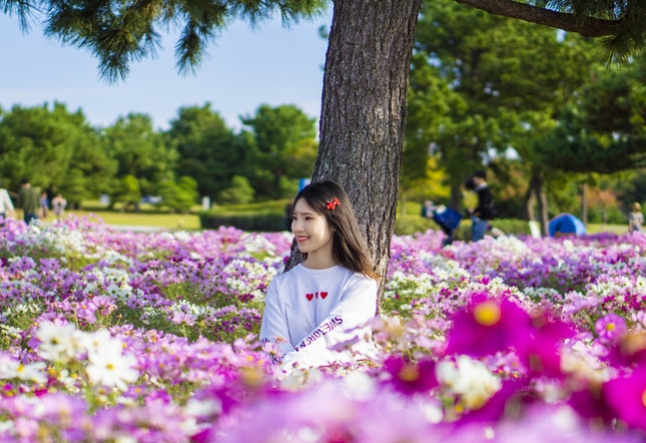loving what is – with gratitude to byron katie

Loving what is (with gratitude to Byron Katie) Spirituality
THE GOAL is universal. Some might seek it through love or success, others through security or accomplishment and still others through joy or serenity. But, while the means may differ, wouldn’t it be nice if, no matter what was happening in the world around you—inside, you just felt good?
The temptation is to try to manage our elusive “inner okay-ness” by trying to change our external environment. Our consumer society, of course, exploits this by tapping into our uncertainty and insecurities; buy this clothing and feel sexy, drive this car and feel successful, use this face cream and look younger. Even if we are consciously aware of the fallacy of using some “thing” to feel better, most of us are victims of the delusion that if only we had this “stuff,” we would feel better inside. Similarly, we mislead ourselves into thinking, “if only this person or circumstance in my life was different, I would feel happier”. While I personally can attest to the neurotic pleasure of blaming someone else for how I’m feeling, ultimately this does not reward my well-being. When we cede our power to forces outside of ourselves, whether material or human, it leaves us abjectly vulnerable.
The Buddhist solution to finding your “inner okay-ness” is non-attachment – if you can release yourself from all expectations or attachment to outcomes then, in theory, you can achieve a “peace that surpasses all understanding.” While the wisdom and refuge of Buddhist teachings resonates deeply, the cynic in me will note that Siddhartha may have achieved enlightenment but his wife, Yasodhara, who he left behind with their child did not. (It makes me want to write a book called: “Buddha Never Lived with a Three Year Old”). Is there really a way to achieve equanimity of emotion or a feeling of inner rightness in the midst of raising children, maintaining relationships, holding down a job?
For me, the solution presents itself by finding a balance between the joy of creation and free will and the serenity of accepting life on its own terms. This isn’t a static state of awareness but a fluid dance between my ego and the “god of my understanding.”
It is tempting to think that your ego thinks it knows what is best for you (and everyone else for that matter) and wants it immediately and in the way you’ve envisioned it. This is very popular in New Age circles that proffer the ability to manifest a mansion, new car, or dream job with the correct amount of visualization. We all want to believe that we can use our energy to manipulate our environment, and thereby exert our desires on the Universe. All of us, however, will eventually run into something we can’t control – the first chink in the self-will amour. This first experience of powerlessness is rarely pretty. Our egos don’t like to grapple with the limits of our ability to control and create our reality.
The other extreme could be called “surrender on steroids” where we are letting God or the Universe direct the show: accepting what is. This is where you don’t necessarily get what you want but you learn to accept and be thankful for what you’re given. This is an advanced state of awareness —the PhD program so to speak—to trust so deeply in life that you can find grace and meaning and goodness in the worst that life has to offer. I personally tend to vacillate between the extremes of self-will and surrender. This is when a spiritual practice becomes really important. That’s why I love the Serenity Prayer—asking for the courage to change what I can; acceptance for what I can’t, and the wisdom to know the difference.
We all know that in the end there is only so much we can control in our outer environment. If life is like a pendulum, it swings up to the left and we experience all the good of life and its corresponding emotions of joy, happiness, passion. But then it must swing in equal measure to the right, bringing with it negativity and suffering. The laws of physics demand both sides.
We can’t eliminate the negative without shutting down our capacity to experience all the joy and beauty on the rebound swing.
So ultimately, day by day, moment by moment, I get to make a choice about my inner okay-ness. If I hang out at the bottom of the pendulum I am choosing to experience life as a fearful and somewhat nauseating ride between the extremes or I can stay closer to the top of the pendulum and consciously choose to “love what is”. Life will still have its full swing between yin and yang, good and bad, joy and pain, but the movement at the top is not so extreme. From this vantage I can see the pendulum swing as “joyful participation in the sorrows of this world “ (Joseph Campbell) Or, as Zorba the Greek says “wife, kids, house—the full catastrophe.”
That’s it. Everyday, every moment, no matter what is happening, you get to decide- will I respond to my life with Fear or Love?
Choose Love.
Maureen is a Certified Bio-Energetic Therapist, Money Coach, and Colon Hydrotherapist.